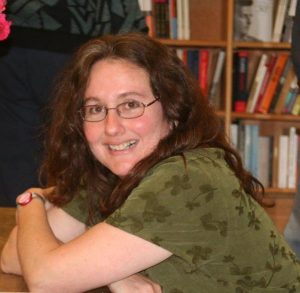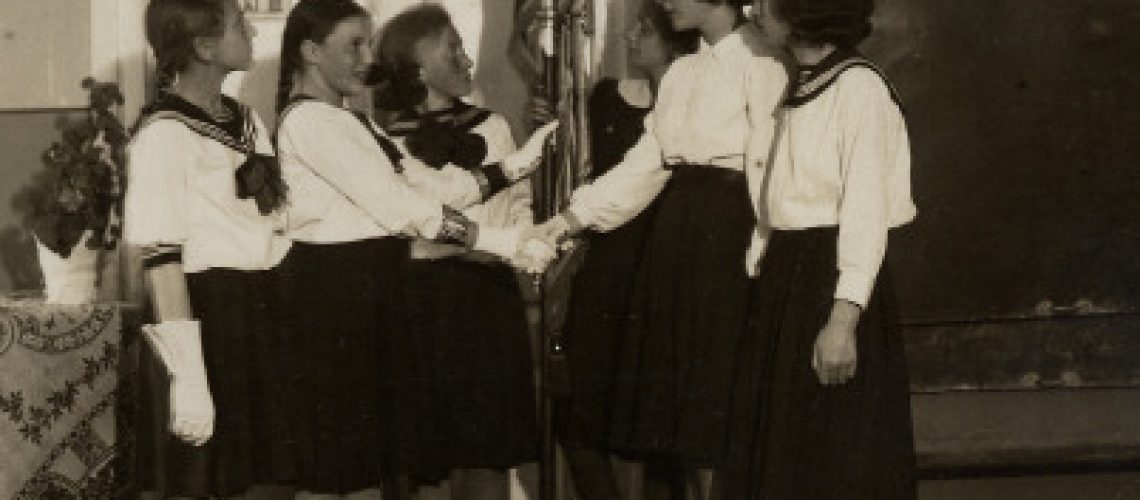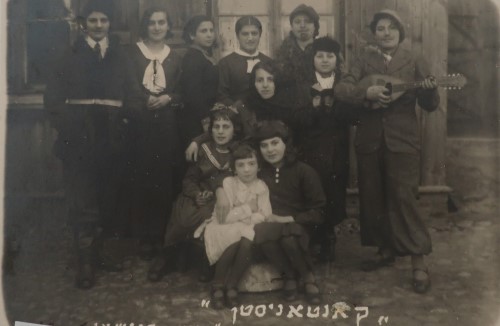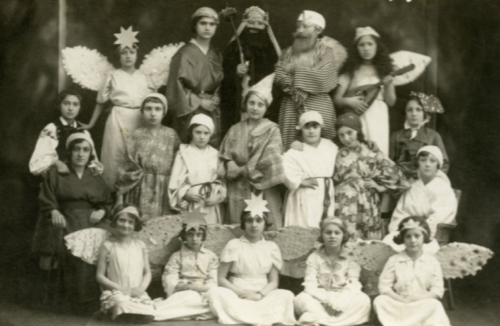On February 22, 1933, the Yiddish daily Hayntige nayes published a news report with the eye-catching title: “The Agudah Is Making Its Own Films: It aims to turn Bnos-Yaakov girls into movie stars.” As the story described this remarkable decision:
The Agudah in Poland is continually instituting new reforms in its ultra-Orthodox program.
Not long ago a rabbinic decision was issued allowing the Bais Yaakov schools to produce public performances, on the condition that only girls would perform and that no boys would be permitted in the audience, not even members of the “Tse’irei Agudath Israel” (the youth movement for boys).
But now the Agudah has taken notice of the fact that the Bnos girls, graduates of Bais Yaakov schools, often go to the movies and they’re more familiar with the names of actresses than of rabbis or Hasidic leaders.
What happened was that a teacher at the Bais Yaakov school on Twarda Street in Warsaw asked the girls in class who the most famous woman in the world was—intending for the girls to answer, “Frau Sarah Schenirer,” the founder of the Bais Yaakov schools in Poland.
But the girls guessed Greta Garbo, Marlene Dietrich, and when they saw that the teacher was unhappy with these answers, one girl called out:
“Teacher, I know.”
“So, who?” asked the teacher.
“Hanka Ordonówna! . . .”
The whole episode might have been swept under the rug if not for the unfortunate circumstance that, on another occasion, a delegation of visitors had come to see the school: Meshulam Kaminer with a whole group of German Agudah activists on a tour of Poland.
When they put various questions to the pupils, in order to show the distinguished guests how well versed they were in Yiddishkeit, the pupils demonstrated their ability to translate the “Asher Yatzar” blessing into Yiddish, that they knew all the laws of Sabbath and holidays, and so on. Suddenly, just as the group was about to leave, it occurred to R. Meshulam Kaminer to ask the children: “Who is the most famous person in Poland, aside from Marshall Pilsudski?” intending for the pupils to answer, “the Gerer Rebbe.”
But somehow, because of the working of some kind of spiteful spirit, he was met with a rain of answers, God help us.
Among the names that rang out: Ramón Novarro, John Gilbert, and others. That very evening a special meeting of Agudah administrators was convened, and it was decided that the Agudah would have to make films itself, so that the girls wouldn’t have to go to the immoral movie theaters.
There were even a few who recommended that the famous film “Exodus” [or the 1923 film “The Ten Commandments”?] and other such historical types of films be screened in Bais Yaakov schools, although it was ultimately decided that those films had been made in too Catholic a spirit.
That was why the Agudah has now decided to make its own film, under the supervision of the executive committee of the Agudah and the Council of Torah Sages.
The script revolves around the legend of the ShaCh’s daughter, from the time of the Chmielnicki massacres (1648-1649).
Only girls will take part in the film.
Reports have it that filming is about to begin on this first Agudah film.
The Agudah has already made arrangements with the Agudath Israel in the United States to secure financing for the film, and a number of scenes will be shot in the Holy Land, which is why Frau Sarah Schenirer set sail for Palestine a few days ago.
All of this was soon enough relayed to the Belzer Rebbe, and we have received reports of his plan to issue a prohibition on family sending their daughters to Bais Yaakov schools, since these schools turn Jewish children into little Christians.
This story, I am truly sorry to say, is almost certainly a complete fabrication.
The giveaway is the detail about Sarah Schenirer setting sail for the Holy Land. Much to her abiding regret, she never managed a trip there. The article appears to be an elaborate joke, catering to the bottomless appetite among readers of the popular Yiddish press for details of the fascinating experiment that was Bais Yaakov. It is also obviously written by someone who knew Bais Yaakov well—the report manages to be both absurd in its main premise and entirely plausible in every detail.
What it got right:
- There was a Bais Yaakov on Twarda Street;
- Meshulam Kaminer, a local Agudah activist and newspaper publisher, was heavily involved in Bais Yaakov of Warsaw;
- German neo-Orthodox leaders were indeed frequent visitors in Bais Yaakov;
- Bais Yaakov pupils, including the ones in the Twarda Street school, were often asked to perform their Jewish knowledge for visitors from abroad;
- Bais Yaakov was famous for its plays;
- permission for public performance was granted to girls on the condition that only girls performed, and that boys were kept from attending (we also have another newspaper report describing Tse’irei Agudah as working security at one such play, and allowing themselves to enter the auditorium and enjoy the play);
- Sarah Schenirer wrote scripts for five or six plays, and herself loved the Polish theatre, as her diary attests;
- United States as the source of funding: well, where else would financial support come from? Bais Yaakov sent R. Tuvia Horowitz to the US in 1928 to raise $25,000 for the Kraków Teachers’ Seminary Building, which opened in 1931.
- the Belzer Rebbe, after granting Schenirer an initial blessing for her cultural enterprise (the details of which he may not have known), did in fact forbid his followers from sending their daughters to Bais Yaakov, on the grounds that they would encounter girls from less stringently observant homes there—a less dramatic version of the above article’s warning that they would become Christian.
And whether the writer of this report, whom we know only through the initials M.A., knew it, Sarah Schenirer was a descendant of the ShaCh, Rabbi Shabtai Hacohen, who witnessed the events of 1648-49; the script she was supposed to have written narrated the story of the ShaCh’s daughter, and in this sense would have been something of a family biography.
More generally, Bais Yaakov not only fought against the foreign influences of Polish culture, Parisian fashion and Hollywood films, it also did so by providing girls with appealing “kosher” substitutes for these forbidden attractions.
It seems to be the case that the Agudah did not actually make a Bais Yaakov film—but if it had, the newspaper report sets an entirely plausible scenario for how that might have come about, who would have written the script, how funding would have been secured, what the ground rules would have been for such a project, and how the Belzer Rebbe (among others on Bais Yaakov’s right flank) would have reacted.
Or...
…might this story actually be correct, with the one exception of Sarah Schenirer’s journey to Palestine? Might there be an old film reel that can show us these proud and beautiful movie stars? For an archive rat like me, that possibility, remote as it might be, keeps me going in my pursuit.

Naomi Seidman is the Chancellor Jackman Professor of the Arts in the Department for the Study of Religion at the University of Toronto and a 2016 Guggenheim Fellow; her 2019 book, Sarah Schenirer and the Bais Yaakov Movement: A Revolution in the Name of Tradition, explores the history of the movement in the interwar period.



